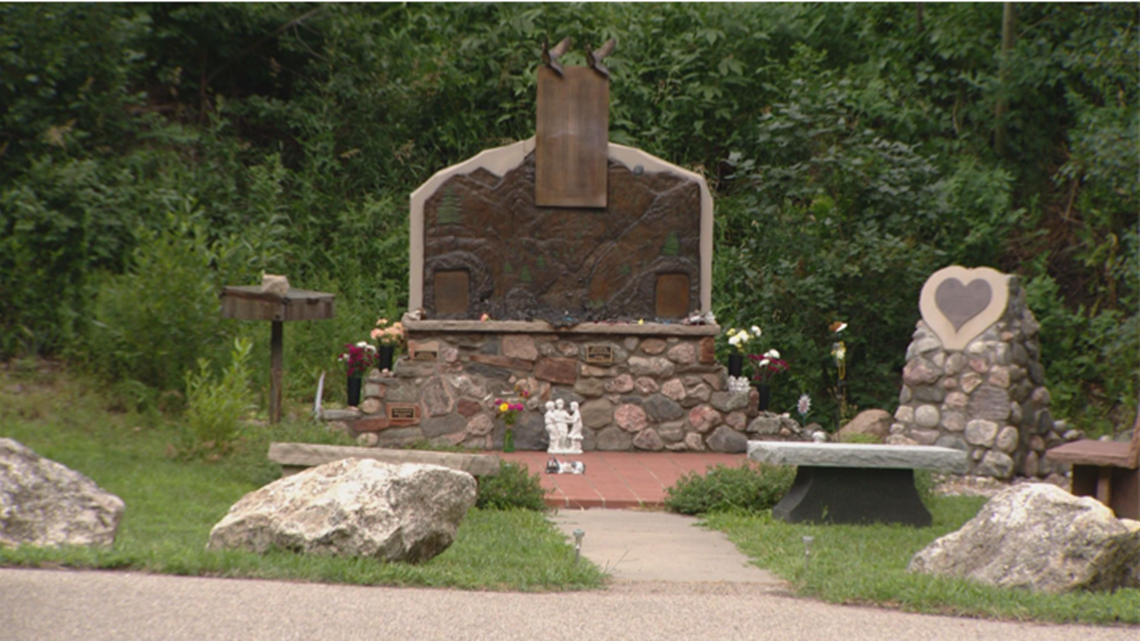LARIMER COUNTY, Colo. — The emergency alerts we get warning of potential flash floods were created because of one of Colorado’s deadliest disasters.
Forty-seven years ago, more than 140 people were killed during flooding in the Big Thompson Canyon. The day forever changed how Colorado prepares for natural disasters.
"We learn the most from chaotic events," said Lori Hodges, Director of Emergency Management for Larimer County.
Inside the emergency operations center in Larimer County, Hodges is ready for the worst. To prepare for the threat of flooding, the emergency management director remembers the lessons learned decades ago.
"The Big Thompson Flood is actually the flood nationally that created the emergency alerts and warning systems nationally for flash flooding because so many people died in that flood," said Hodges. "Over 140 people died in the Big Thompson flood."
On July 31, 1976, 144 people died as floods washed through the canyon west of Loveland.
"The reason that there were so many deaths is that there was really no way to alert a lot of the folks in the area," said Hodges.


In September 2013, Colorado saw widespread flooding again with flash floods from Boulder to Colorado Springs. Nine people drowned.
The National Weather Service (NWS) said the flooding in 2013 was more extensive than the Big Thompson Flood in 1976, but because there were better emergency alerts and more accurate warnings born from the 1976 flood, many people got out of the area and it was a far deadlier disaster.
"Going back to 1976 as it relates to alerting people, we had zero tools," said Kimberly Culp, CEO Larimer Emergency Telephone Authority. "The tools were more people yelling “emergency” and personnel going to the area and face to face trying to get people out of the way."
Culp runs the Larimer County 911 program. When she sends an emergency alert warning of flooding today, it can go out through cell phones, radios, land lines, and signs on the road. None of that was possible 47 years ago.


Yet the challenge remains the same: reaching people in the middle of a canyon to warn them of danger.
"Once you’re in there, if you don’t have radio coverage from a weather radio or cell coverage form a cell phone, we’re not going to be able to reach you," said Culp.
The challenge in all of this is reaching people who don’t live here. People in Estes Park, for example, heading down the Big Thompson Canyon after a week at Rocky Mountain National Park.
While they try and reach people through text, that doesn’t always work. They’ve now installed signs throughout the canyon warning people that there’s flooding or a fire and they need to turn around.
Decades later, the lessons learned from one of the deadliest days in Colorado history are still saving lives.
"The 1976 flood is still something that we look back on and see, have we made the changes that are needed for our community?" said Hodges.
SUGGESTED VIDEO: Full Episodes of Next with Kyle Clark
MORE WAYS TO GET 9NEWS
Subscribe to our daily 9NEWSLETTER
Download the 9NEWS APP
iTunes: http://on9news.tv/itunes
Google Play: http://on9news.tv/1lWnC5n
HOW TO ADD THE 9NEWS APP TO YOUR STREAMING DEVICE
ROKU: add the channel from the ROKU store or by searching for KUSA.
For both Apple TV and Fire TV, search for "9news" to find the free app to add to your account. Another option for Fire TV is to have the app delivered directly to your Fire TV through Amazon.

